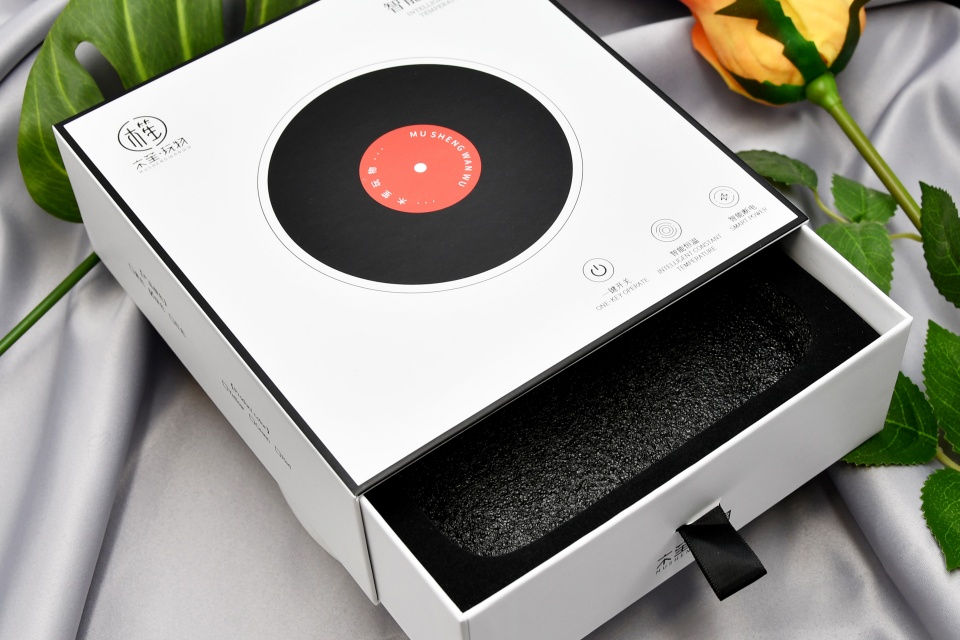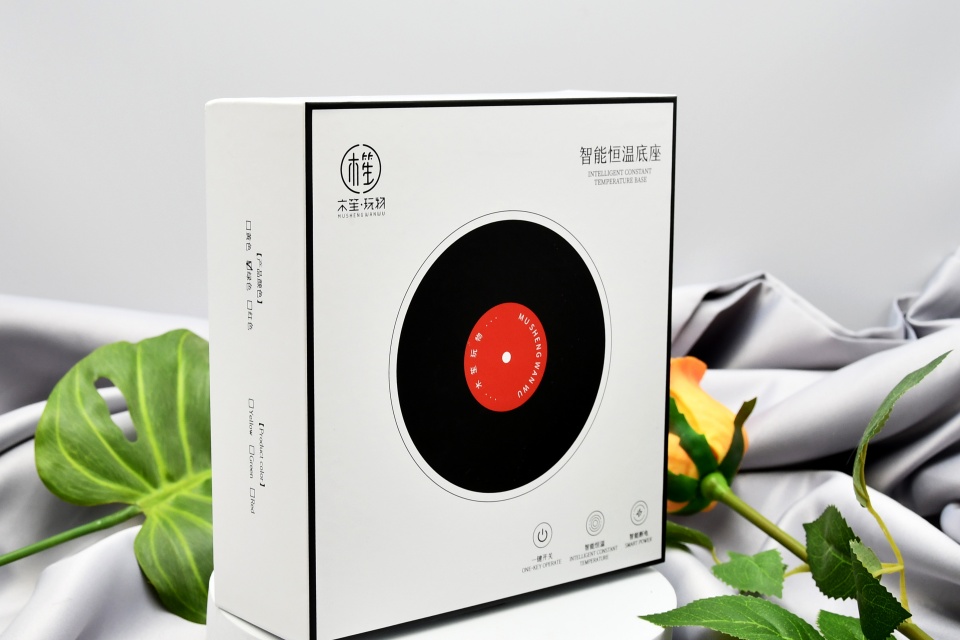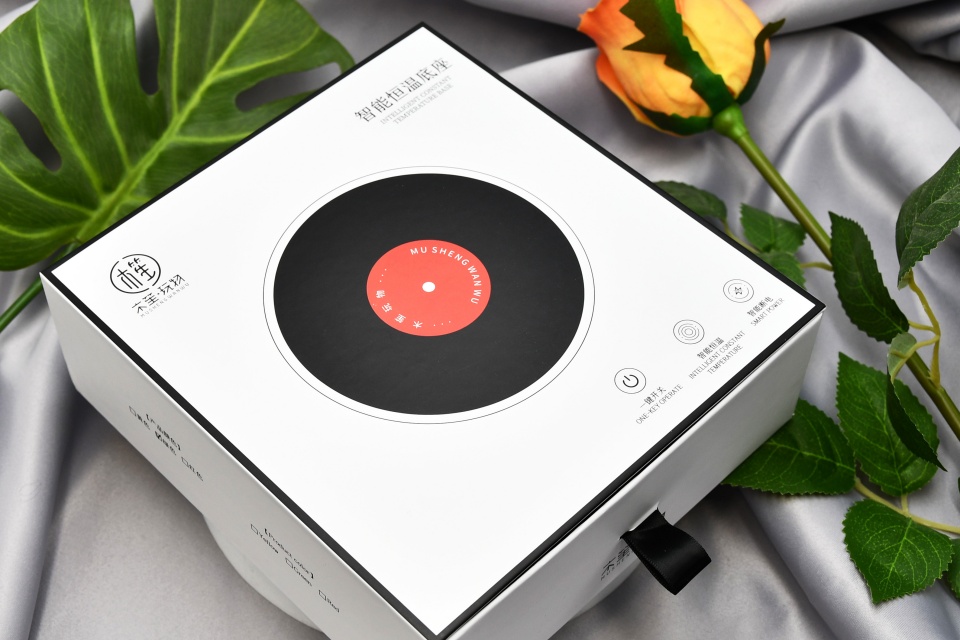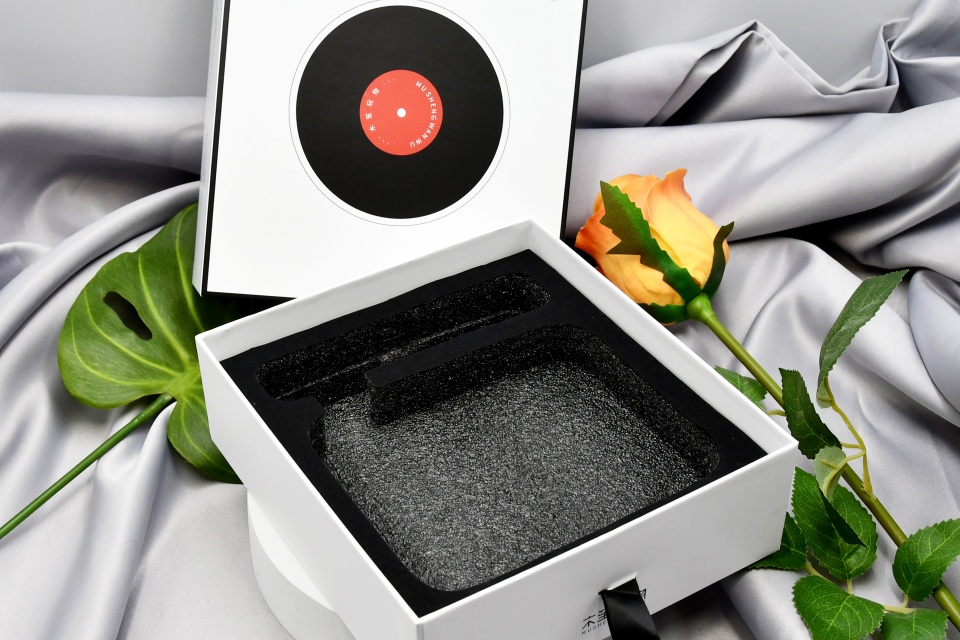Creative Design Ideas for Slide Boxes
This guide explores creative slide box design. It covers eco-friendly materials, custom features, user experience, and future trends for innovative packaging.
Summary
Creative design ideas for slide boxes represent a vital intersection of functionality and aesthetics in packaging, catering to various industries including cosmetics, electronics, and luxury goods. Slide boxes, characterized by their unique sliding mechanism, offer both practicality and visual appeal, allowing consumers easy access to products while enhancing the overall unboxing experience. Their design versatility enables brands to tailor these boxes to fit specific products and marketing strategies, further elevating brand identity and consumer engagement.
The growing demand for sustainability has propelled eco-friendly slide boxes to the forefront of packaging innovations. Constructed from recyclable and biodegradable materials, these boxes align with increasing consumer expectations for environmentally responsible practices. Brands that adopt sustainable packaging not only enhance their market appeal but also demonstrate a commitment to social responsibility, reflecting broader societal trends towards ecological awareness and conservation efforts.
In addition to sustainability, the integration of advanced design principles plays a critical role in slide box innovation. Human-centric design, aesthetics, and user experience are central to creating packaging that resonates with consumers. Trends such as minimalist designs and playful elements highlight the need for brands to balance visual appeal with functional usability, ensuring that packaging not only attracts attention but also provides convenience during product access.
However, challenges persist in the realm of slide box design, including the need to maintain structural integrity, select appropriate materials, and achieve a balance between customization and functionality. Brands must navigate these complexities while keeping pace with evolving consumer preferences, particularly as the market shifts towards more personalized and interactive packaging solutions. The future of slide box design is poised to embrace technology and innovation, shaping the way products are presented and experienced by consumers.
Table of Contents
Types of Slide Boxes
Eco-Friendly Slide Boxes
Eco-friendly slide boxes are constructed from recyclable and sustainable materials, making them an excellent choice for brands that prioritize environmental responsibility. These boxes align with eco-conscious brand values while still providing robust packaging solutions suitable for various products, including luxury items and retail goods.
Custom Sliding Boxes with Inserts
Custom sliding boxes are designed with an attractive matchbox-style that facilitates easy access to stored items. The integration of inserts ensures that products remain organized and secure during handling and transport. These boxes are often made from materials such as cardboard, rigid paper, or Kraft paper, allowing for both durability and aesthetic appeal. Their structural design is engineered to enhance the unboxing experience, making them ideal for personal and commercial use alike.
Versatile Applications
Slide boxes can accommodate a wide array of products, including electronics, cosmetics, jewelry, and promotional materials. Their versatility is complemented by customizable features that enable brands to tailor sizes, shapes, and designs to meet specific packaging needs and branding strategies. Custom printing options, such as embossing and debossing, allow brands to prominently showcase their logos and promotional messages on the box surface, enhancing brand visibility.
Premium Slide Boxes
Premium slide boxes are designed for high-end products, offering a luxurious unboxing experience that adds an element of surprise. Their sturdy construction provides enhanced product protection during shipping and handling, ensuring that items arrive in pristine condition. These boxes can also feature windows, allowing customers a glimpse of the product inside, further attracting potential buyers.
Material Variations
There is a broad selection of materials used for manufacturing slide boxes, including rigid paperboard, Kraft paper, and even high-end options like velvet or suede. Each material provides distinct characteristics such as durability, texture, and eco-friendliness, allowing brands to select the most suitable option for their products. Additionally, the use of laminated corrugated cardboard enhances the visual appeal and sturdiness of the packaging.
By employing these various types of slide boxes, brands can effectively elevate their packaging strategy, combining functionality with aesthetic appeal while maintaining a commitment to sustainability.

Design Principles
Human-Centric Design
The trend in contemporary slide box design emphasizes the human element, reflecting a desire for authenticity in a world increasingly influenced by artificial intelligence. This approach advocates for packaging that resonates with consumers, communicating the message that “This product is made by humans, for humans.”. This human-centric philosophy is evident in the use of design techniques that mimic the aesthetics of traditional print methods, such as lino and woodcut prints. Although these designs are executed digitally, they aim to replicate the unique textures and imperfections characteristic of handmade products, fostering a warm and personable connection with the consumer.
Aesthetic Considerations
Aesthetics play a crucial role in the design process, as an attractive design not only complements usability but also enhances functionality. Effective slide box designs leverage principles of visual appeal to engage users and convey brand identity. Colors, shapes, and typography contribute significantly to how a product is perceived. For instance, colors can evoke specific emotions, guiding consumer decisions; reds often symbolize urgency, while blues suggest trust. Moreover, the shape of the packaging influences perceptions, with smooth, rounded edges typically conveying comfort and femininity, whereas sharp angles may suggest edginess and masculinity.
User Experience and Functionality
The design of slide boxes should prioritize user experience, ensuring that the packaging is intuitive and easy to use. Key elements include simplicity in design to prevent clutter, consistency across branding, and responsiveness to various consumer needs. Feedback mechanisms, such as clear visual cues, are essential to guide users through their interaction with the packaging. This thoughtful approach to usability not only enhances consumer satisfaction but also builds brand loyalty.
Integration of Technology and Sustainability
Modern packaging design must consider the integration of technology and eco-friendly practices. The rising consumer demand for sustainability influences design choices, compelling brands to explore innovative materials and production processes that minimize environmental impact. Companies that successfully implement eco-friendly materials and clear sustainability claims can strengthen their market position and appeal to increasingly conscientious consumers.

Creative Design Ideas
Creative design ideas play a crucial role in enhancing the visual appeal and effectiveness of slide presentations. Utilizing tools like PowerPoint’s Design Ideas can streamline this process by providing tailored suggestions that align with the content of each slide. The Design Ideas feature offers various layout options, color schemes, and font choices to elevate the aesthetic of presentations without the need for extensive design skills. Users can apply a suggested design instantly and further fine-tune it to meet their specific needs.
Utilizing AI in Slide Design
The integration of artificial intelligence into slide design, such as through PowerPoint’s Designer, allows users to leverage automated suggestions to create stunning presentations efficiently. By simply modifying or adding significant content, users can refresh the Design Ideas to receive new recommendations optimized for their updated information. However, it’s essential to note that if multiple users are co-authoring a presentation simultaneously, the Designer may not generate options for the shared slide.
Emphasizing Authenticity in Packaging
Beyond slide presentations, the concept of design extends to packaging trends, which emphasize storytelling and authenticity. The “Back to Your Roots” packaging design trend embraces cultural heritage, utilizing illustrations and traditional patterns to connect with consumers on a personal level. This approach resonates particularly well with brands in the food and drink sector, as well as handmade craft products, where cultural significance adds value to the consumer experience.
Minimalism vs. Elaborate Designs
As of 2024, there is a notable shift in consumer preferences towards minimalist packaging designs. Such designs are characterized by simplicity, clean lines, and eco-friendly materials, which appeal to the growing demand for sustainability. In contrast, elaborate packaging continues to be favored in luxury markets, where intricate designs and premium materials can convey exclusivity and enhance the perceived value of the product.
The Role of Playfulness in Design
In response to contemporary societal trends, playful design elements, such as the “Marker Pen Mascots” trend, introduce a lighthearted approach to packaging. This trend focuses on simplistic mascot outlines that invoke a sense of fun and creativity, appealing to consumers seeking a joyful brand experience. Additionally, using elements like horizontal gradients and sunset palettes in design can evoke calmness and serenity, making these visual strategies ideal for wellness and health-focused products.

Examples of Creative Slide Box Designs
Versatile Applications
Creative slide box designs cater to a diverse array of products, making them an ideal packaging solution for items such as electronics, cosmetics, jewelry, luxury goods, and promotional materials. This versatility allows brands to explore innovative shapes, sizes, and designs that effectively showcase their products while enhancing brand identity.
Customization Features
Print and Finishing Options
Slide boxes provide ample opportunity for customization. Brands can utilize custom printing, embossing, debossing, and a variety of finishing techniques to enhance their packaging. These options allow for the display of logos, product information, and promotional messages, thereby creating an engaging visual appeal that captivates consumers. Additionally, some slide boxes can incorporate windows to offer a glimpse of the product, drawing customer attention and fostering interest.
Material Selection
The choice of materials significantly influences the overall aesthetic and functional appeal of slide boxes. Popular options include rigid paperboard, kraft paper, and even luxurious materials such as velvet or suede. Each material brings unique characteristics—durability, texture, and eco-friendliness—that can be aligned with the brand’s values and the product’s requirements.
Enhanced User Experience
The innovative sliding mechanism of these boxes allows for convenient access to the products without needing to remove a lid entirely. This design not only simplifies user interaction but also enhances the overall experience of unboxing, which is particularly important for high-end products. Furthermore, slide boxes can include inserts and compartments to secure items during transportation, adding another layer of protection and practicality.
Eco-Friendly Innovations
As consumer demand for sustainability grows, slide boxes are also evolving to incorporate eco-friendly materials and practices. Brands can choose biodegradable or recycled materials, which appeal to environmentally conscious consumers while reducing the ecological footprint of their packaging. This trend is becoming a vital aspect of brand identity, with many companies leveraging their commitment to sustainability as a marketing strategy to attract eco-aware customers.

Tools and Software for Designing Slide Boxes
Designing custom slide boxes requires a blend of creativity and technical proficiency. Various tools and software can aid in the creation of appealing and functional slide box packaging.
Graphic Design Software
Adobe Creative Suite
Adobe Creative Suite, particularly Adobe Illustrator and Adobe Photoshop, is widely used for creating intricate designs for slide boxes. These tools allow designers to manipulate graphics, create vector designs, and incorporate brand elements seamlessly. Users can also utilize Adobe InDesign for layout design, ensuring that the printed material aligns with the packaging specifications.
CorelDRAW
CorelDRAW is another popular choice among designers, offering robust vector graphic design capabilities. Its user-friendly interface makes it accessible for both novice and experienced designers looking to create custom packaging solutions, including slide boxes. The software supports various file formats, which is essential for printing processes.
3D Packaging Design Software
ArtiosCAD
For packaging design that requires structural integrity and visual appeal, ArtiosCAD provides specialized tools. This software allows designers to create 3D models of packaging, including slide boxes, enabling them to visualize the final product before production. This feature helps in testing the packaging’s practicality and aesthetics.
Packmage
Packmage is a dedicated packaging design software that focuses on creating 3D mockups and dielines for various types of packaging, including slide boxes. The ability to see a 3D representation of the slide box aids designers in making adjustments that enhance both functionality and branding.
Online Design Tools
Canva
For those who may not have extensive design experience, Canva offers a simplified platform for creating packaging designs. With its drag-and-drop functionality and extensive library of templates and graphics, users can design appealing slide box packaging quickly. It is particularly beneficial for small businesses or startups looking to create impactful designs on a budget.
Figma
Figma is a collaborative design tool that allows multiple users to work on a design project simultaneously. This is particularly useful for teams working on packaging design, as it enables real-time feedback and editing. Figma supports vector graphics and can be utilized for both graphic and structural design of slide boxes.
Case Studies
The exploration of innovative slide box design and functionality has garnered attention from various institutions and organizations. A notable initiative by the Slide Materials Task Force (STMTF) highlighted the importance of sharing practical experiences regarding the reuse, recycling, and disposal of visual materials such as 35mm slides. In an effort to collect insightful reports, the STMTF encouraged members to contribute case studies, which culminated in a collection of valuable resources that benefit the community at large.
Contributions from Academic Institutions
Several academic institutions have provided exemplary case studies on the effective use of slide boxes in visual resources management:
- Brown University: The History of Art & Architecture Art Slide Library submitted a detailed case study highlighting best practices in the organization and repurposing of visual materials.
- Pennsylvania State University: The Department of Art History’s Visual Resources Center showcased their approach to utilizing slide boxes for educational purposes, emphasizing their versatility and adaptability in various contexts.
- University of New Mexico: The Bunting Visual Resources Library’s case study focused on sustainable practices in slide management, including innovative packaging solutions that align with eco-friendly initiatives.
- Worcester Art Museum: Their contribution detailed the operational strategies employed to maintain and optimize their visual resources, including the use of customizable slide boxes.
Benefits of Case Studies
These case studies serve multiple purposes:
- Knowledge Sharing: By disseminating their experiences, institutions provide a wealth of information that can aid others in similar endeavors, promoting a culture of collaboration and learning.
- Best Practices: The documented approaches highlight best practices in the field, allowing organizations to benchmark their operations against established standards and innovate accordingly.
- Inspiration for Design: The case studies not only focus on functionality but also provide inspiration for creative design in slide boxes, illustrating how effective packaging can enhance both aesthetic appeal and usability.
Challenges in Slide Box Design
Designing custom slide boxes presents several challenges that require careful consideration to ensure both functionality and aesthetic appeal.
Structural Integrity
One of the primary challenges in slide box design is maintaining structural integrity. Slide boxes must be constructed from durable materials, such as rigid paperboard or corrugated cardboard, to withstand the rigors of transportation and handling. The sliding mechanism needs to be robust enough to ensure smooth operation while preventing damage to the box and its contents. If the box is not designed correctly, it may compromise the product’s safety, leading to potential customer dissatisfaction and damage claims.
Material Selection
Choosing the right materials for slide boxes is crucial and can be challenging due to the variety of options available. Designers must balance aesthetics, cost, and sustainability. For instance, while premium materials like velvet or suede may enhance the luxury appeal of a product, they can significantly increase production costs. Additionally, the trend towards sustainability pressures companies to opt for eco-friendly materials without compromising the quality and protection the packaging provides.
Customization Versatility
While customization is a key selling point of slide boxes, the multitude of options can complicate the design process. Brands often seek unique designs, which may require complex printing techniques, embossing, or debossing, increasing the potential for errors during production. Furthermore, ensuring that custom features align with the brand’s identity while remaining functional can present a creative dilemma for designers.
Balancing Aesthetics and Functionality
Designers must also strike a balance between aesthetics and functionality. The visual appeal of a slide box is essential for attracting consumers, yet the design must not hinder usability. For example, while intricate designs may enhance brand visibility, they could complicate the sliding mechanism or make it difficult for customers to access the product efficiently.
Market Trends and Consumer Preferences
Lastly, staying attuned to evolving market trends and consumer preferences poses another challenge. With consumers increasingly gravitating towards minimalist packaging and sustainable solutions, designers must continually adapt their concepts to align with these preferences while still delivering an engaging unboxing experience. Balancing contemporary trends with traditional luxury elements requires ongoing research and innovation, making the design process dynamic and challenging.
Future Trends in Slide Box Design
Sustainability and Eco-Friendly Materials
As environmental awareness grows, the demand for sustainable packaging solutions is expected to shape the future of slide box design significantly. Brands are increasingly adopting eco-friendly materials such as recycled paper, biodegradable options, and sustainably sourced components to minimize their environmental impact. This shift not only aligns with consumer preferences but also supports a circular economy, encouraging the reuse of materials and reducing waste.
Customization and Personalization
The trend toward customization will continue to evolve, with brands focusing on tailored solutions that reflect their identity and meet specific consumer needs. Innovations in digital printing technologies are making it easier to produce small runs of uniquely designed slide boxes, allowing for intricate artwork, embossing, and foil stamping that enhance the visual appeal of the packaging. The capability to create bespoke designs is becoming a crucial factor in differentiating products in a competitive market.
Enhanced Functionality
Future slide box designs are likely to prioritize enhanced functionality alongside aesthetic appeal. Features such as easy-open mechanisms, integrated compartments, and modular designs will cater to consumer demands for convenience and user-friendliness. Additionally, incorporating elements like window cutouts and decorative handles can further enrich the unboxing experience, making it more interactive and engaging for customers.
Technology Integration
The integration of technology into packaging design is set to rise, with smart packaging options becoming more prevalent. This may include QR codes or NFC chips embedded in slide boxes that provide customers with additional product information, promotional content, or interactive experiences. Such technological advancements can enhance brand storytelling and foster a deeper connection between consumers and products.
Minimalism and Aesthetics
The minimalist design approach is anticipated to gain traction, with brands focusing on clean lines, simple graphics, and a restrained color palette. This trend not only appeals to consumers seeking elegance and sophistication but also aligns with sustainable practices by reducing excessive materials and inks in the production process.
By embracing these future trends, brands can leverage slide box design as a strategic tool to elevate their marketing efforts, enhance customer satisfaction, and contribute to a more sustainable future.
